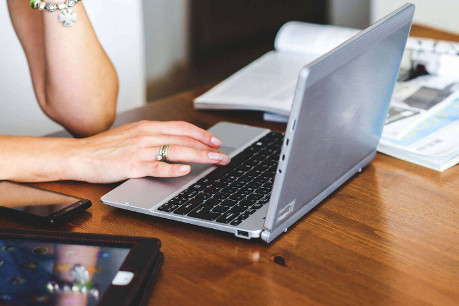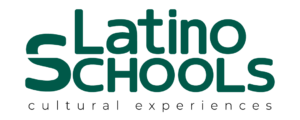Menu
Useful Information about Cuzco, Peru
We are happy to provide you with all the assistance you need to prepare your adventure in Peru. Here are a few tips and information about Cuzco that will help you to organize your trip and get the most out of your stay
Due to the high altitude, year round it is cold at night (30 – 40ºF / 0 – 5ºC) and houses have no heaters. Daytime temperatures range from 60 – 70ºF / 15 – 22ºC. April to September is the coldest time with daytime temperatures in the high 60sºF / around 15ºC, and the 30sºF / around 0ºC at night. The rainy season is from October to April.
- January 1: New Years Day.
- June 2 and 3: Corpus Christi (a Catholic event with indigenous influences).
- June 24: Inti Raymi (a theater spectacle based on an old Inca tradition of adoration of the sun during the winter solstice).
- July 16: La Virgin de Paucartambo (a local cultural religious event close to Cuzco).
- November 2 and 3: Todos los Santos, Dia de los Muertos.
- December 24: Christmas Eve.
- December 25: Christmas Day.
- December 31: New Years Eve.
Important advice: Cuzco is a hopping city with a happening night life, enjoyed by many international tourists. Use common sense!! Beware of petty theft in crowded places. Don’t walk alone late at night. The most common theft is done by fraudulent travel agencies selling naive tourists nonexistent services!
Organized trips and activities are offered two to three times a week. These activities are optional and include for example: city tour, cooking class, dance classes, parties, videos, lectures, trips to museums, etc. Students pay only for their own transportation and entrance fees.
Just a few examples of cultural activities offered are:
- Huasao (Shaman town)
- Inca Museum and Qorikancha (Temple of the Sun)
- Central Market
- Inca ruins such as Saqsaywamán, Qenko, Tambomachay
- … and many, many more!
The school can help you arrange travels for yourself or with a group. Sometimes the school organizes weekend trips. Usually two professors go on these trips.
There are a few gyms in Cuzco which allow short-term memberships. The cost is about $15 per month.
Upon request your host family will pick you up from the airport. Extra fee: $ 20. The family will also provide you with other valuable information about Cuzco upon your arrival.
Lima airport pick-up, transfer to hotel, one hotel night in Lima, transfer back to airport, Lima to Cuzco one-way airfare and Lima airport assistance (additional hotel nights possible) are available as a package..
Important pre-departure information
This is probably the most relevant information about Cuzco to have in mind. When traveling anywhere in Latin America you should always carry your passport or a copy of it on you. It is also a good idea to bring photocopies of other essential documents (airline tickets, important prescriptions, etc.) stored in a separate place.
- No visa is necessary for citizens of the US, Western European countries, South American countries (except Chile and Venezuela), Canada and Japan for stays up to 90 days.
- Obtain a tourist card from the immigration authorities when you arrive in Peru.
- The tourist card is valid for visits up to 30 days (sometimes longer).
- Tourists cards can be renewed at Migraciones, Paseo de la Republica 585, Lima. Also, you can renew tourist cards in major towns like Cuzco or Arequipa.
- A departure ticket is officially required for entry into Peru.
- There is a $ 25 airport tax on international flight departures from Peru.
- Always call your Peruvian Embassy or Consulate and double check on entry requirements, since they change frequently.
- You should not drink tap water unless it has been boiled or treated with iodine.
- Typhoid, Yellow Fever and Hepatitis A are present – get inoculated before coming.
- Cholera is present – however visitors who follow proper precautions about food and drink are usually not at risk.
- Always have a check-up if bitten by a dog or any animal, because of the possibility of rabies.
- In the mountain cities, be prepared for altitude sickness, headaches, shortness of breath, especially during the first few days.
- There have been reports of a TB epidemic. Avoid non-pasteurized dairy products.
- It may be a good idea to take Malaria pills in tropical areas.
- Contact your local doctor before you leave if you are not sure about appropriate shots.
Cuzco is 11,000 feet / 3200 meters high. It is best to allow a day or two to acclimate yourself upon arrival. Rest, and avoid heavy meals and alcohol. Even if you are in excellent physical condition before arriving there is no guarantee that you will not be bothered altitude sickness. Even individuals in great health may feel a little short of breath in the beginning. Your first few days of acclimating could be a great chance to enjoy the cheap taxi fares in Cuzco! There is a medical station in the airport if arriving visitors have any immediate problems with the altitude.
220 volts AC, 60 cycles throughout the country. (Except Arequipa – 50 cycles).
During the European winter Time: 6 hours behind Western European and 5 hours behind GMT-time.
During the European daylight saving time: 7 hours behind Western European and 6 hours behind GMT-time.
Mainly Roman Catholic. Indigenous ceremonies and traditional beliefs are often blended with Catholicism.
The literacy rate is 85%. The Indigenous population of Peru is about 3 million. About two million indigenous people speak no Spanish. Their main language is Quecha, the language of the Incas.
Collect calls can be made to the US and Canada and some European countries at Telefonica offices. You can buy tokens and phone cards for international and long distance calls at Telefonica offices. Faxes can be sent from major Telefonica offices.
The mail service has improved since the private company Serpost took control. For an extra 50 cents, letters can be sent “con certificado,” which we recommend. Sending parcels abroad is expensive. If you need to send parcels by post to Peru, taxes can be up to 200% of the value.
- Hotels : 10% in addition to the 10% on the bill.
- Restaurants: service is included in the bill, but if somebody is going out of his or her way for you, then tip!
- Taxi drivers : usually no tips.
- In 1991, the Peruvian currency (the “Inti”) was replaced by the new “Sol” (S/).
- In more expensive establishments, prices are sometimes quoted in dollars.
- Try to exchange large notes for smaller ones whenever you can, because there is a shortage of change. Taxi drivers often tell you that they don’t have any change (many times this is not true). You don’t have to accept this excuse.
- Travelers checks can be changed into soles or dollars at banks.
- You can also change US dollars into soles at banks and casas de cambio (exchange houses). There is usually no difference in the exchange rate given by banks and casas de cambio. You may exchange dollars 24 hours/day at the Lima airport
- It is common that people or businesses do not want do accept dollar bills which look old or are torn, not even banks.
- Credit cards – Visa (the most commonly accepted), Diners Club and Master Card are widely accepted in main cities.
- Cash can be withdrawn from your credit card at some banks, but in Soles only.
- Shops: Stores are usually open from 9 or 10am to 12.30pm, and from 3 or 4pm to 8pm. In the main cities, supermarkets do not close for lunch. Some shops are closed on Saturdays and most are closed on Sundays.
- Banks: 9am-12.30pm and 3-6pm. Closed Saturdays.
- Business offices: 8.30am-12.30pm and 3-6pm (some 9am-5pm ).
- Government offices: January-March, Monday-Friday 8.30am-11.30pm. The rest of the year, Monday-Friday, 9am-12.30pm and 3-5pm. This changes frequently!
Need more information about Cuzco? Please feel free to contact us. We’re happy to assist you with anything you need in advance.
Learn Spanish in Cuzco, Peru Our Spanish school in Cuzco






